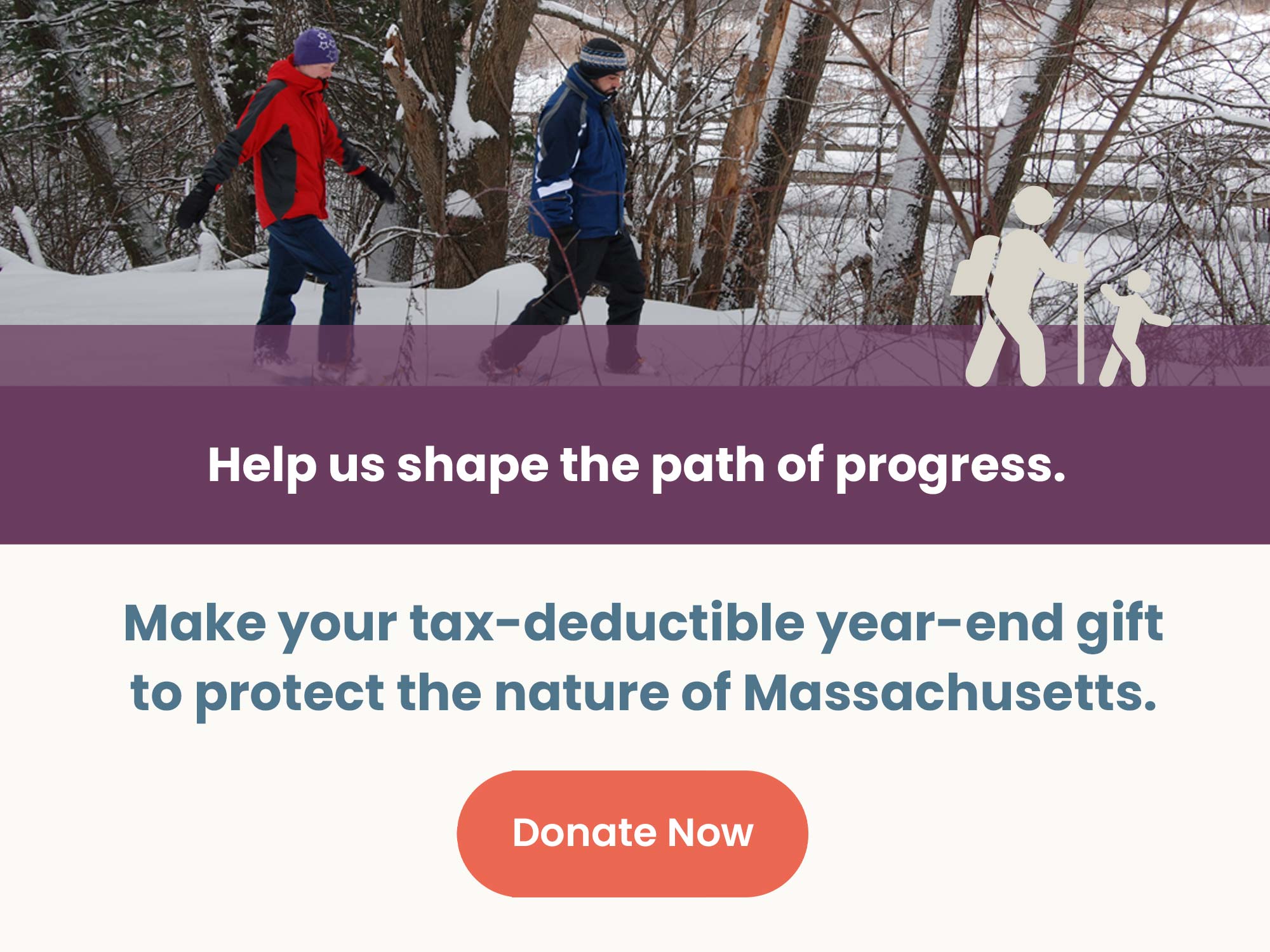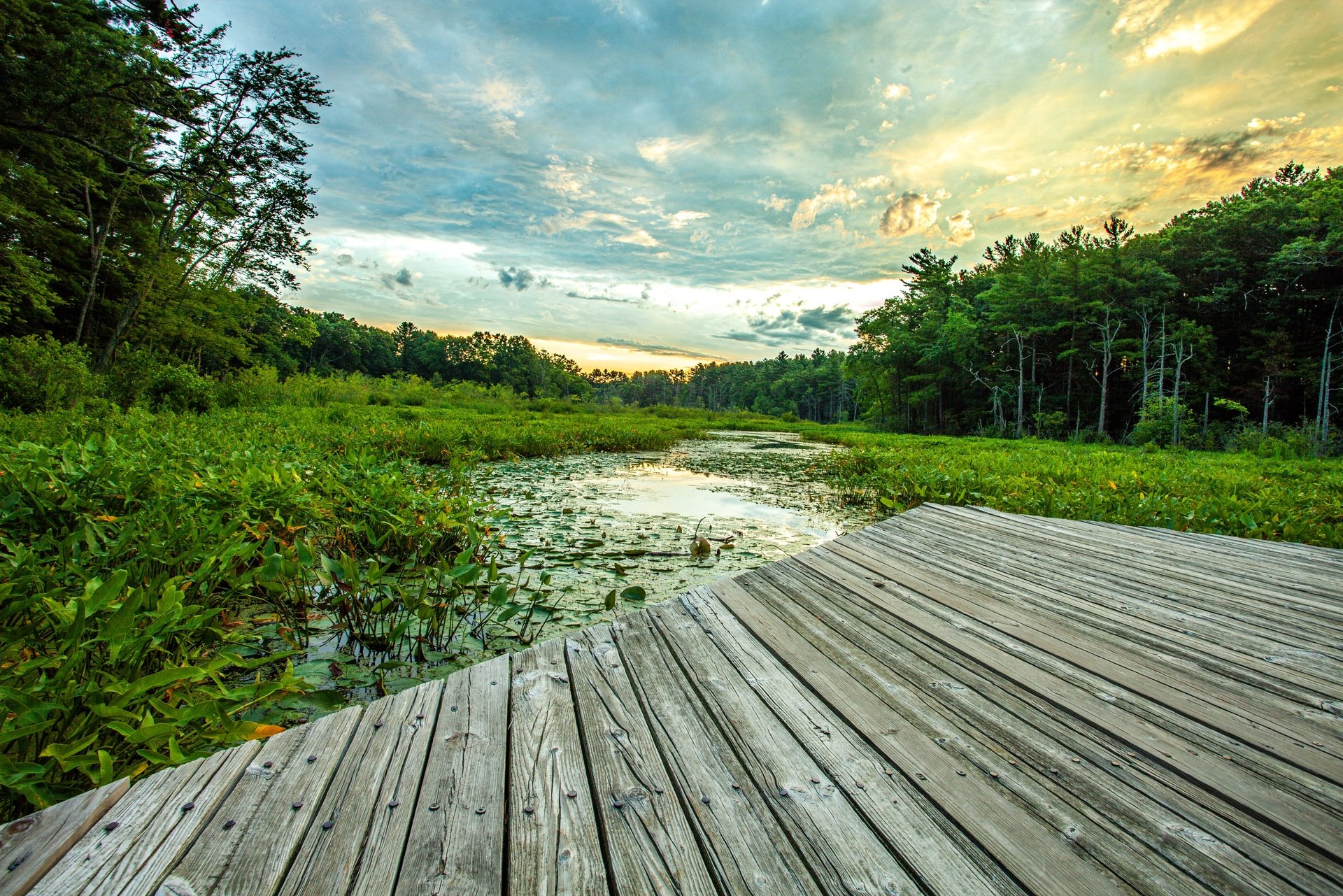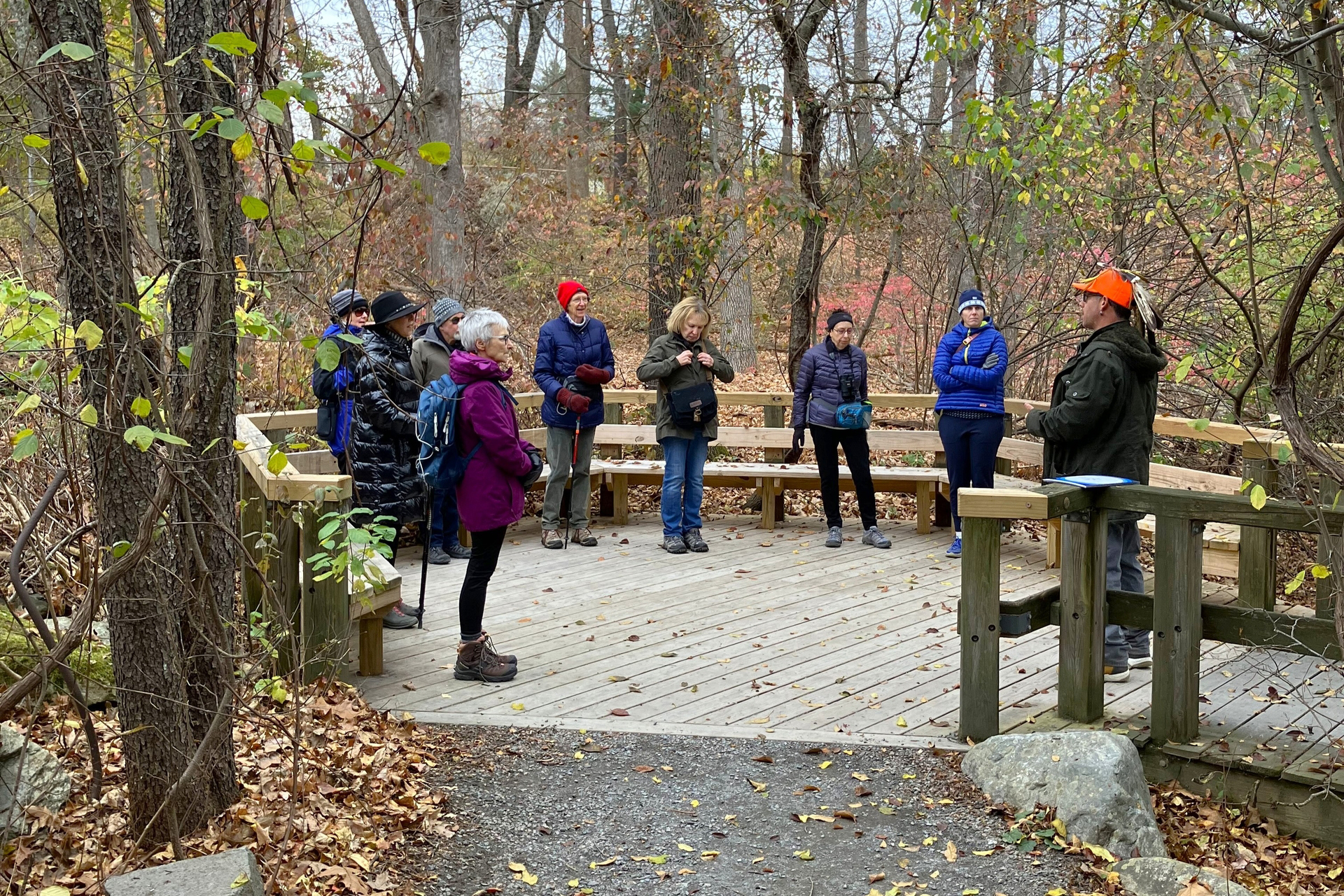On a crisp fall afternoon, Waban Webquish walks through the forest at Broadmoor Wildlife Sanctuary in Natick. Camera in hand, he trains his eye expertly on birds flitting through the treetops, snapping shots as he goes.
Waban is a local Wampanoag-Nipmuc naturalist and nature photographer who is deeply involved in preserving and teaching others about Indigenous cultures. He has been leading walks at Broadmoor for several years now and has become a cherished partner at the sanctuary. Get to know Waban in his own words about his teaching, philosophy, and connection to conservation organizations like Mass Audubon.
Getting Involved with Broadmoor & Returning to His Roots
I started doing local programs in Natick and nearby towns, and a colleague connected me with the staff at Broadmoor. When I visited, I immediately felt I had something to contribute, and that Broadmoor's diverse landscapes provided so much to see and talk about.
I grew up around Framingham, Ashland, Natick, and Wellesley, so I know the area well. I spent a lot of time outdoors growing up, especially around the ponds of Lake Cochituate. I’ve led programs all over the state, but coming back to my family’s ancestral area felt meaningful. My family descends from the Thomas Speen Indigenous line of Natick, and the Charles River holds deep ceremonial importance for us.
When I saw that Broadmoor had river access and canoes, I thought a paddle tour would be a perfect way to explore both the land and culture from a new perspective. That’s something we’ll be doing later in the summer, and I also regularly lead seasonal walks around the sanctuary.
Developing Programs to Highlight Indigenous Knowledge
My work focuses on gathering and sharing Traditional Ecological Knowledge (TEK) and wisdom I’ve learned from elders in my community, especially my grandmother, who was the sachem of the Natick Nipmucs.
I create programs based on seasonal change—what’s happening now, what’s to come, and how to look for those signs, following the 13-moon lunar calendar. The calendar represents the 13 segments on a turtle’s back, and each month highlights different seasonal phenomena to hone in on.
A big aspect of what I do is sharing local knowledge about the land, flora, and fauna of Turtle Island, which is what we call Mother Earth. That includes how we interact with the Earth through gathering fruit, nuts, wild rice, and herbs, or fishing and hunting, throughout the seasons.
I design programs so people can interact with lands that are stewarded by organizations like Mass Audubon, the Conservation Commission, the Trustees, and others in a different way, from a different perspective that they might not have considered before.
Finding Community in Nature
The community aspect of my walks is just as important as the environmental one. People often come as strangers but leave as friends. Some regulars have been attending my walks for years. I’ve had folks in their 60s or 70s who lost a partner and still came back out to a walk the next season because the connection to the land meant so much to them.
People also share their own stories and local knowledge, and I learn from them too. Others come, see a deer or a rare plant for the first time, and are inspired to learn more. That kind of exchange builds real community. There’s always something new—that’s what keeps it alive and engaging.
Teaching Philosophy and What People Can Take Away
I want people to get out of their social norms and preconceptions and to have a raw, real experience with the land. Growing up in public schools and in my early career, I saw how many people were taught stereotypes or incomplete stories about Indigenous peoples. I felt the need to go into individual communities, share directly, and help people engage authentically.
A lot of my philosophy comes from our teachings that we’re not separate from Mother Earth or any living beings. Everything is alive, everything is reciprocal. The trees, the animals, the water—all of it has spirit. That’s something I always try to communicate on my walks: we don’t just observe nature, we participate in it. It’s not just recreation, it’s a way of life, a relationship. Whether you’re picking up litter, caring for an animal, or simply walking respectfully, you’re engaging in stewardship.
My teaching style really fits well at Broadmoor because I believe people need to connect directly with what they’re learning, as opposed to something like an indoor lecture. Outside, you can hear a blue jay, see it, photograph it, and learn its story all at once. That kind of learning is immediate and tangible. It’s not about how many miles you walk or how fast you go. It’s about being present, connecting with your surroundings, and letting the land teach you.
Hope for the Future
I find hope in the work that’s already being done by so many passionate people. There’s still plenty of work to do, but education and engagement are key. As we learn and share, we give back to the land. We’re not hoarding information, we’re creating pathways for others to connect—whether it’s through birding, art, service projects, or collaborations with schools and colleges.
So many solutions can be found in Indigenous teachings. We’ve been living sustainably here since the last Ice Age—our practices are original and effective. But all of this depends on protecting the land itself. Without that foundation, none of these opportunities would exist.
Connect with Waban
You can participate in Waban’s upcoming Beaver Moon Cycle nature walk at Broadmoor on November 22. Stay tuned as well for a new paddling program he will be leading this summer. You can also catch him leading programs on Wampanoag lands in Cape Cod and Mashpee, as well as in Southeastern Massachusetts.
Learn more about him at wampanoagshells.com or follow his many projects on social media.
Facebook: Wampanoag Shells, Good Dawn Rising
Instagram: @wampanoagshells @wabanstudio @gooddawnrising @turtlelandconservancy






